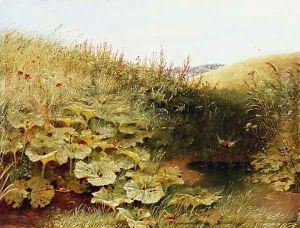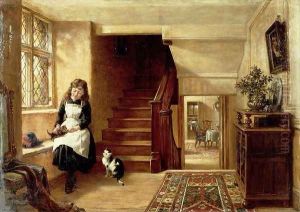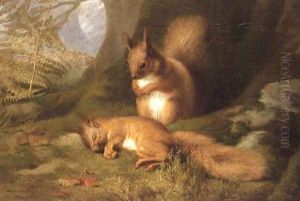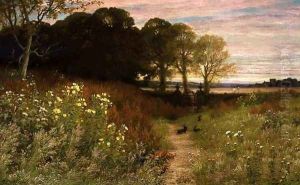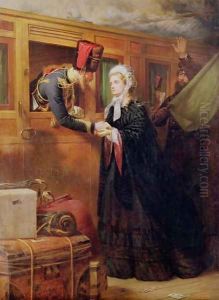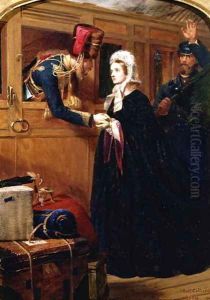Robert Collinson Paintings
Robert Collinson was a British artist born in 1832 in Greenwich, London. He was part of the Victorian era of artists, a period renowned for its detailed and often moralizing works, in which the fine arts flourished in the wake of the Industrial Revolution. Collinson, although not as widely recognized as some of his contemporaries, contributed significantly to the era's artistic landscape through his meticulous and often serene landscapes, as well as his religious and genre paintings.
Collinson's early life was marked by a passion for art, leading him to pursue formal education in the field. He trained at the Royal Academy Schools, a prestigious institution that nurtured many of the period's most successful artists. His education there equipped him with the skills to produce works with the detailed realism that the era's audience favored. Collinson's works often featured the British countryside, depicted with an idyllic, almost ethereal quality that was characteristic of the time.
Throughout his career, Collinson exhibited at various esteemed venues, including the Royal Academy and the British Institution. His paintings were well received, earning him recognition among his peers and the public. Despite this, Collinson never achieved the level of fame or financial success enjoyed by some of his contemporaries. This was partly due to the competitive nature of the art world at the time and the changing tastes of the Victorian public, which began to favor the more avant-garde approaches of the Pre-Raphaelite Brotherhood and later, the Impressionists.
Collinson's personal life was relatively quiet and kept away from the public eye, a contrast to the more bohemian lifestyles of some of his contemporaries. He focused on his work and lived a modest lifestyle. His dedication to his craft is evident in the consistent quality and execution of his paintings throughout his career.
Robert Collinson passed away in 1893. While he may not have enjoyed widespread fame during his lifetime, his contributions to Victorian art have been reassessed in recent years, with modern critics and historians acknowledging his skill and the tranquil beauty of his landscapes and religious works. Today, his paintings can be found in various collections, serving as a testament to his talent and the enduring appeal of the Victorian artistic aesthetic.
